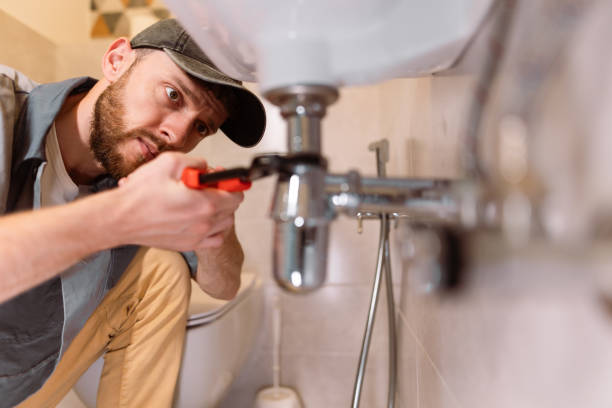Why Fast Action Matters in Plumbing Emergencies
When a plumbing emergency arises, quick decision-making can mean the difference between routine repairs and extensive, costly renovations. Water can cause rapid and far-reaching damage, seeping into flooring, soaking drywall, and even impacting the structural integrity of a home if left unchecked. Fast action is particularly important in multi-story buildings, where leaks can travel downwards, affecting multiple units simultaneously. By immediately reaching out to a trusted emergency plumber, homeowners are better positioned to contain the situation and receive professional guidance tailored to the issue at hand. This step not only protects personal property but may also safeguard health by reducing the likelihood of mold growth, which often follows water damage.
Most Common Plumbing Emergencies and Their Causes
Plumbing problems come in various forms, but some scenarios are far more common than others. Burst pipes, for example, can occur in older homes where pipes have weakened over time, or after a cold snap when water freezes and expands within the plumbing. Overflowing toilets are a universal nuisance, often caused by blockages in the drain line resulting from items such as wipes or excessive toilet paper. Sinks that suddenly stop draining are usually the result of accumulated grease, hair, or soap residue that eventually forms an immovable plug. Meanwhile, water heater failures often result from neglect, age, or mineral buildup within the tank, which can lead to leaks or a sudden loss of hot water.
Some emergencies, such as leaks hidden within walls or beneath floors, may go undetected until a significant puddle forms, leaving visible damage or inciting a subtle but persistent musty odor. Regular maintenance, such as inspecting pipes for corrosion and monitoring for discolored patches or bulging paint, can provide early clues that trouble is brewing. Ultimately, many emergencies can be avoided when homeowners recognize and act on small warning signals before they spiral into urgent and expensive scenarios. Prioritizing a quick response is also environmentally wise. The EPA’s Fix a Leak Week initiative highlights that U.S. homes waste nearly 1 trillion gallons of water every year due to minor leaks that could go unnoticed until they escalate. Such an enormous volume could supply millions of homes, and even a single undetected leak can waste hundreds of gallons each month. Swift attention to leaks, drips, or pipe bursts not only lowers water bills but also represents a meaningful way to conserve natural resources and support sustainability in the community. Fast action creates a ripple effect of benefits, protecting homes, wallets, and the planet.
First Steps to Take Before Help Arrives
After a plumbing emergency, it is crucial to locate and shut off the main water supply to prevent further damage. If unsure, check the perimeter of your property, basements, or garages. Listen for changes in water flow as you turn the valve. After halting water flow, contain any escaped water using buckets, towels, or mops, and move valuables, electronics, or furniture out of harm’s way. If water has come into contact with electrical outlets, appliances, or wires, cut the power to the affected area at the main electrical panel. Take detailed photos or videos for insurance purposes or to assist with troubleshooting by a professional. These initial steps allow you to gain control while waiting for specialists to address the deeper cause of the issue.
What Not to Do During a Plumbing Crisis
When in a panic, it’s essential to avoid using chemical drain cleaners, as they can corrode pipes and produce hazardous fumes. It’s also crucial to be aware of the delicate nature of plumbing systems and avoid tampering with gas-powered appliances. Even a minor oversight can compromise your safety. Instead, resist the urge to force open fixture covers, break tiles, or attempt repairs that could complicate matters. Instead, wait for expert assistance and avoid taking unnecessary actions, such as attempting to disassemble pipes without proper knowledge and training. This will help prevent further damage and ensure a safe and efficient situation.


